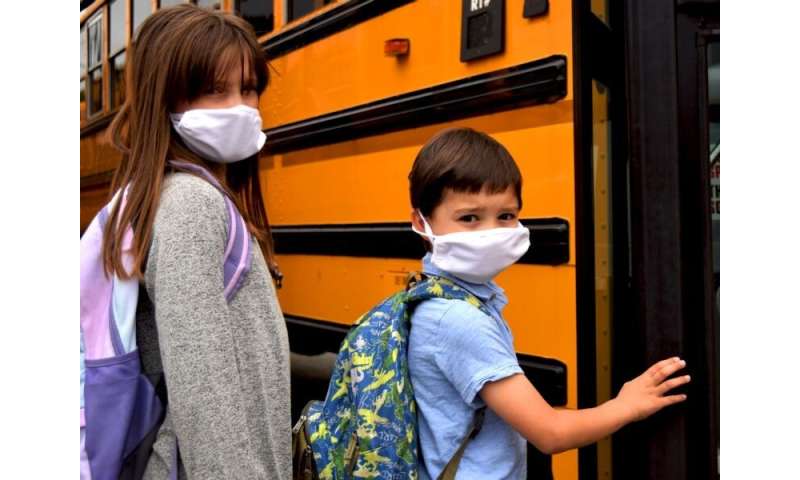
(HealthDay)—Facing opposition from President Donald Trump and others, the U.S. Centers for Disease Control and Prevention has issued a document supporting a reopening of the nation’s schools this fall.
“As families and policymakers make decisions about their children returning to school, it is important to consider the full spectrum of benefits and risks of both in-person and virtual learning options,” the agency said in a document posted on its website Thursday night.
The COVID-19-related health risks to kids are minimal compared to those faced by adults, the CDC said.
Citing numerous studies, the agency stressed that “the best available evidence indicates if children become infected, they are far less likely to suffer severe symptoms. Death rates among school-aged children are much lower than among adults.”
According to the CDC, just 7% of U.S. COVID-19 cases, and less than 0.1% of related deaths, have occurred in people under the age of 18. And so far in 2020, fewer children have died from COVID-19 than typically die from the flu in a given year.
Kids also appear to transmit the new coronavirus at a lower rate than adults, the CDC said. And as for potential transmission from children to adults, “there have also been few reports of children being the primary source of COVID-19 transmission among family members,” the CDC said. “This is consistent with data from both virus and antibody testing, suggesting that children are not the primary drivers of COVID-19 spread in schools or in the community.”
However, a child’s age may alter his or her risk, new data is showing. One study out of South Korea released last week found that kids aged 10 and older may spread the virus just as efficiently as adults.
As to the benefits of reopening classrooms, “the harms attributed to closed schools on the social, emotional, and behavioral health, economic well-being, and academic achievement of children, in both the short- and long-term, are well-known and significant,” the CDC said.
One survey of 477 school districts by the University of Washington’s Center on Reinventing Public Education concluded that “far too many schools are leaving learning to chance,” the CDC said. “Just one in three school districts expected teachers to provide instruction, track student engagement, or monitor academic progress for all students.”
Poor and minority children are especially hurt by school closures, the CDC added.
“These students are far less likely to have access to private instruction and care, and far more likely to rely on key school-supported resources like food programs, special education services, counseling, and after-school programs to meet basic developmental needs,” the agency said.
Then there’s the critical importance of the socialization school brings to developing children. According to the CDC, “important social interactions that facilitate the development of critical social and emotional skills are greatly curtailed or limited when students are not physically in school.”
School closure and extended home quarantine are even being linked to higher rates of mental health issues in kids, including post-traumatic stress disorder, the CDC said.
Children also exercise less when kept at home, the agency said, and millions may eat less healthily, because they are missing out on school lunch programs.
“Reopening schools creates opportunity to invest in the education, well-being and future of one of America’s greatest assets—our children—while taking every precaution to protect students, teachers, staff and all their families,” according to the CDC.
The agency’s guidelines to reopen classrooms may not sit well with some, however. Trump two weeks ago sent the CDC’s guidelines back to the agency after labeling them “very tough and expensive.”
Source: Read Full Article
